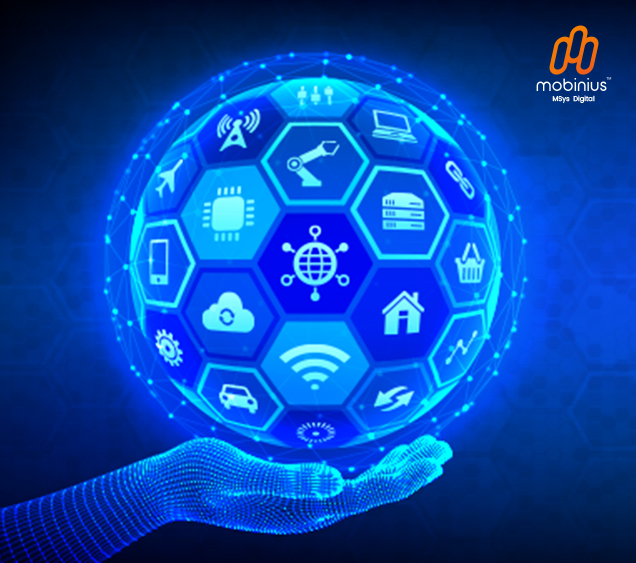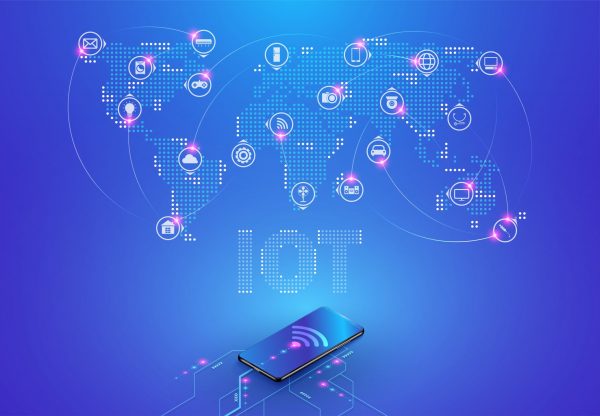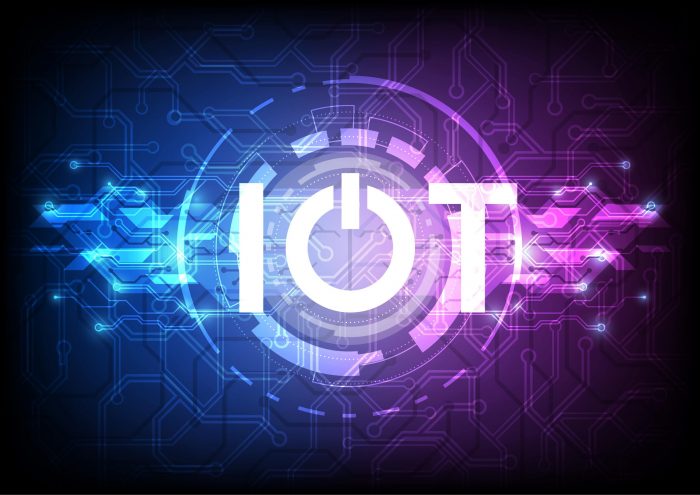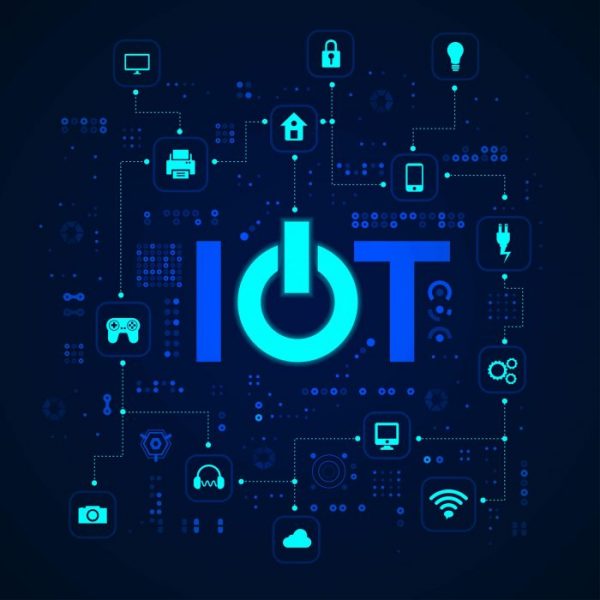IoT Trends in Manufacturing Industry 2021
Audio : Listen to This Blog.
In a manufacturing set-up with IoT applications, a plant operator gets notifications about the replacement of spare parts in advance through the cloud – thus ensuring predictive maintenance!
All of this is not just possible but a reality of the world we live in. IoT market growth rate is interestingly capturing a lot of business models.
Let’s talk about Industry 4.0 to understand this well. It encompasses automation in manufacturing set-up including concepts like Smart manufacturing and smart factory. The technology is getting wider acceptance from the industry stalwarts and finding its way through real-life applications.
Although Industry 4.0 is still scaling up its contribution in the manufacturing setups, its vision of complete automation with interconnected devices is clearly a preference. Industry 5.0 is the future. It will be focused on human and robot collaboration for better efficiency and productivity. Mass customization and personalization is the key aspect of fifth Industrial revolution. It will integrate the automated and efficient concepts of Industry 4.0 and IoT with human skill sets.
Table of Contents
What is IoT?
IoT stands for Internet Of Things. IoT manufacturing solutions are a key part of the implementation and there are many IoT companies in the US and across the globe that implement IoT frameworks. Such companies also share details on the latest IoT trends like digital twin IoT etc.
A set of technologies applied to the manufacturing landscape gives birth to a new concept of the factory in which every product, device, machine, and process is interconnected to the others. Effectively, the Internet of Things (IoT) is a set of interconnected devices which are connected to each other on the internet for collecting and exchanging data. Thus, IoT enables remote monitoring and control along with real-time analytics. This concept when used in industries is also termed as Industrial Internet of Things (IIoT) or Industrial IoT 4.0.
IoT in Manufacturing Industry
IoT in manufacturing can be implemented basis two key IoT solutions listed below. This can be done with the help of an IoT development company that develops web portals or applications ( both Android & IOS) through IoT application development services suitable to the business.
-
Enhanced Service Support
As the name suggests, this element ensures better service support to the customers through the below elements:
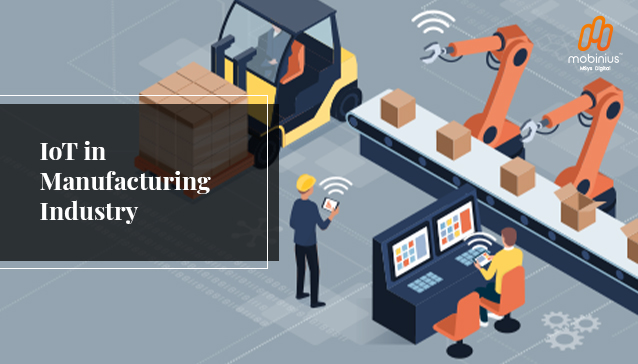
-
Asset Visibility
Provides visibility of the basic machine KPIs (Key Performance Indicators) e.g. humidity, temperature, etc.
-
NOC Module
Enables real-time monitoring of machines installed anywhere across the globe and provides remote support.
-
Alarm Management
A system that allows analysis and classification of the historical data. Also, ensures notifications to the users through e-mail, WhatsApp, SMS, etc.
-
Performance Optimization
Analyze KPIs and generate reports across machines and factories to identify cross-machine or cross-plant trends.
-
Process Analytics
Provides a live comparison of critical process and quality parameters for a batch, compared to a reference batch (R&D) or FDA approved specifications
Read More : “Mobinius Emerges as the Best IoT Development Company“
-
Intelligent Maintenance System
A preventive maintenance scheduler with the capability to generate tickets and track execution work logs
-
Predictive Maintenance
Provides Artificial Intelligence (AI) and Machine Learning (ML) based forecasting of potential component/machine failure. For example, deposits in heat exchangers are hard to detect and can clog the conduits. IoT devices that measure the temperature difference upstream and downstream, however, can issue warnings on anomalies that indicate potential blockages.
There are many IoT solution providers in India with the know-how of IoT technologies. The above key solutions can be further supported by consulting services to improve machine performance and yield. Applications of IoT in manufacturing require digitization of all production elements. However, every interconnected device is a potential liability from a security point of view and businesses must factor in this threat in advance.
Advantages of IoT
Below are the key benefits of IoT:
1.Higher Efficiency
- Better output backed by higher manufacturing efficiency.
- Better utilization of assets
2.Higher Machine Uptime
Downtime reduction via preventive maintenance and monitoring.
- Access to data and analytics can help companies streamline operations and improve overall performance.
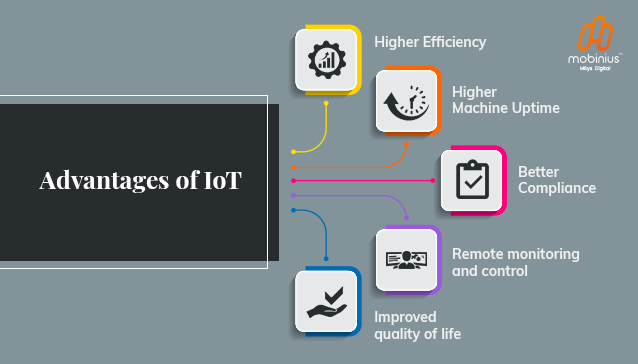
3.Better Compliance
- Better visibility of manufacturing data can help in improving compliance with respect to regulations.
Read More : “ Digital Transformation Technologies – COVID19 Savior“
4.Remote monitoring and control
- It eliminates human errors in data collection and dependency on manual intervention.
5.Improved quality of life
It automates the data collection process and saves man-hours spent on manual activities. It allows businesses to collect data that would be difficult or time-consuming to arrange manually.
Conclusion
COVID 19 restrictions hit the logistics and supply chain across the globe. Owing to unforeseen circumstances and delays; Organizations, Institutes, and NGOs are relying more on real-time updates to understand the situation better and align their plan of action accordingly.
For more information on how we can help you leverage your technologies, feel free to reach out to us here.
Contact us
Implementation of new technologies would pave the way to tackle the uncertainties in a better manner. Smart Solutions including IoT business solutions are disrupting the manufacturing industry and the need is more than ever before in the current scenario. The focus is required on technological expertise and skilled manpower (whether it is outsourced or managed in-house).
Opt for an IoT services company experienced in the latest IoT trends for better results.
FAQ's
On an IoT platform, a digital twin is a virtual representation of a physical asset, a machine, a vehicle, or a device. It digitally represents the data, processes, operation states, and lifecycle of the asset. IoT brings about the change with centralized controls and optimized processes, training, and maintenance with the help of digital twins. Digital twin eliminates the need for working on physical devices or systems to troubleshoot errors but instead creates a replica of the device or system digitally to provide insightful training to support maintenance.
IoT Developers are professionals who work on IoT technology to develop and manage IoT solutions. They have technical expertise and know-how of IoT frameworks.
